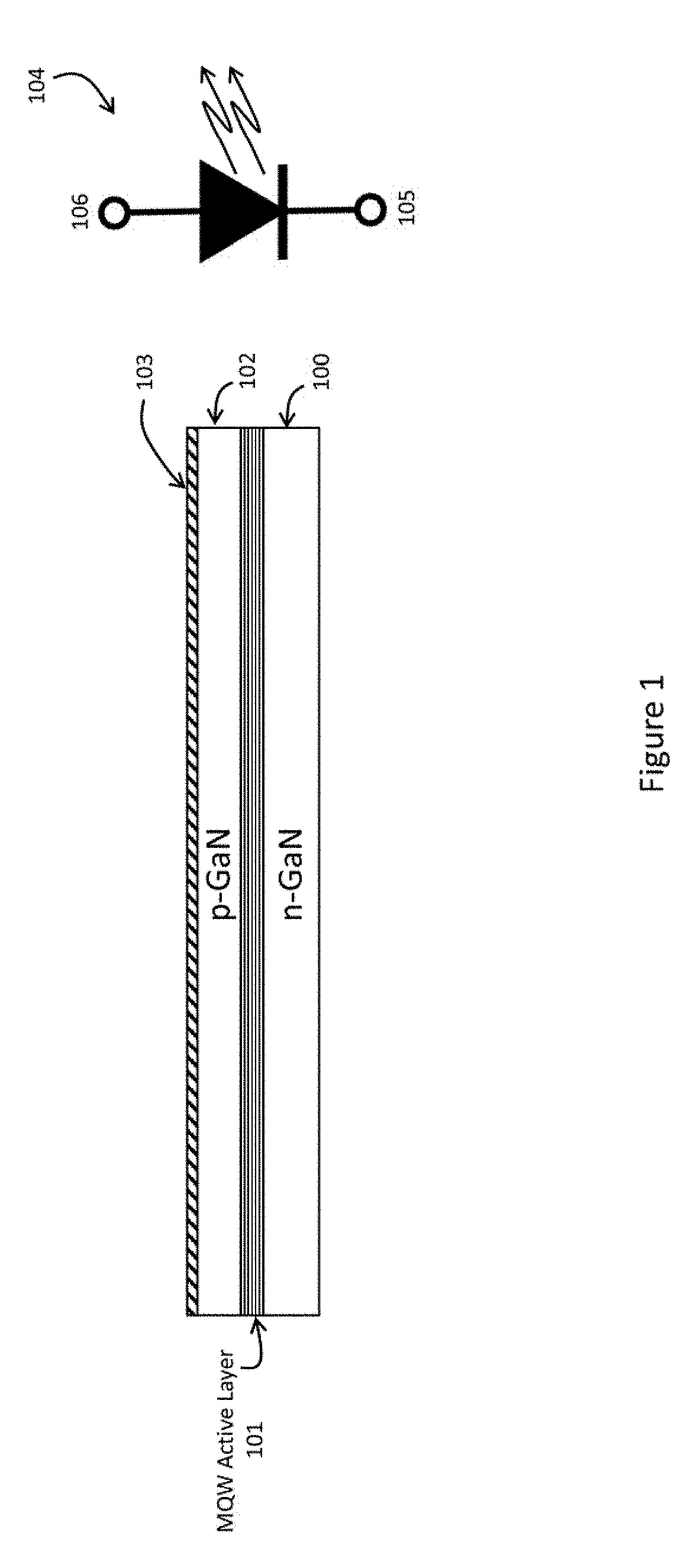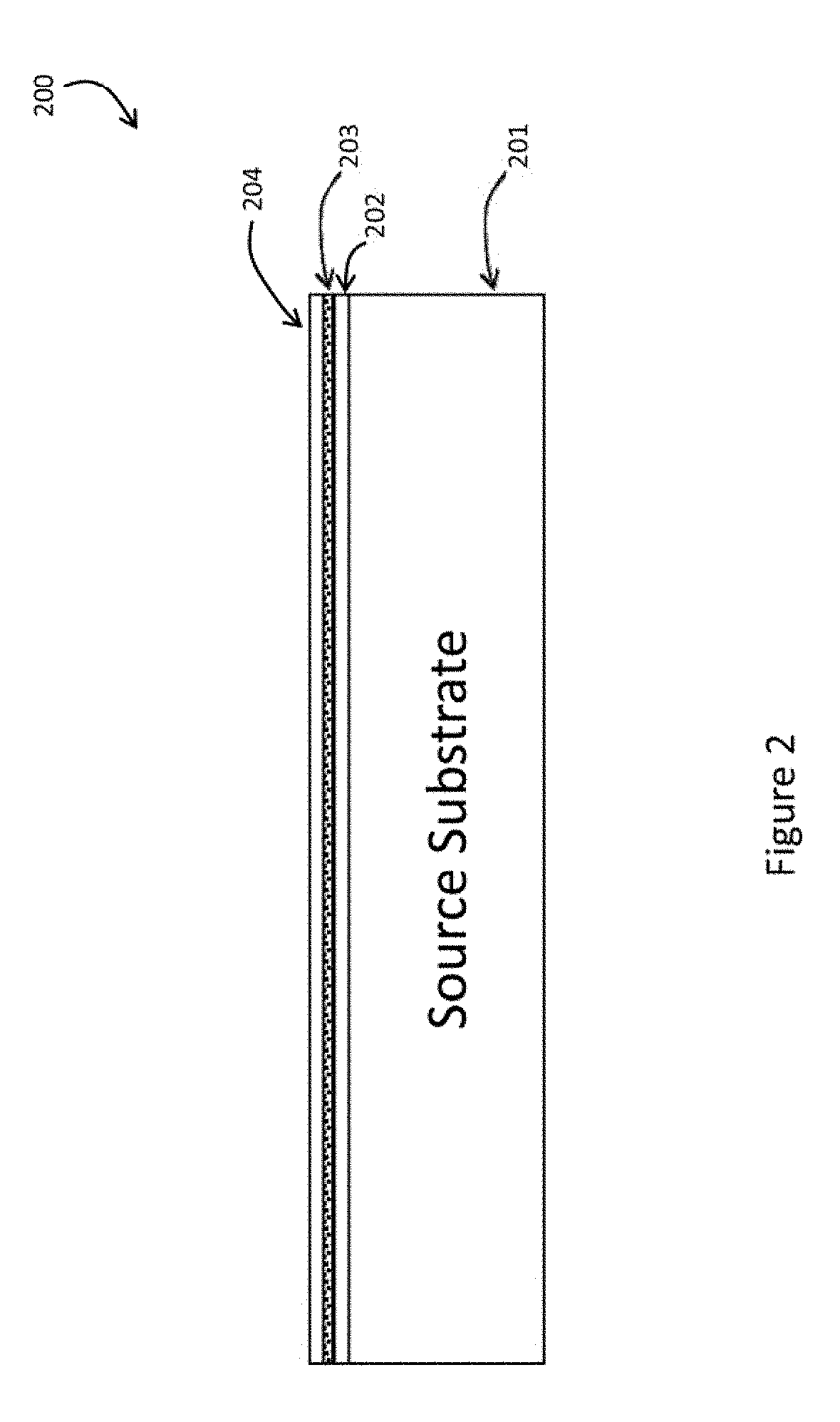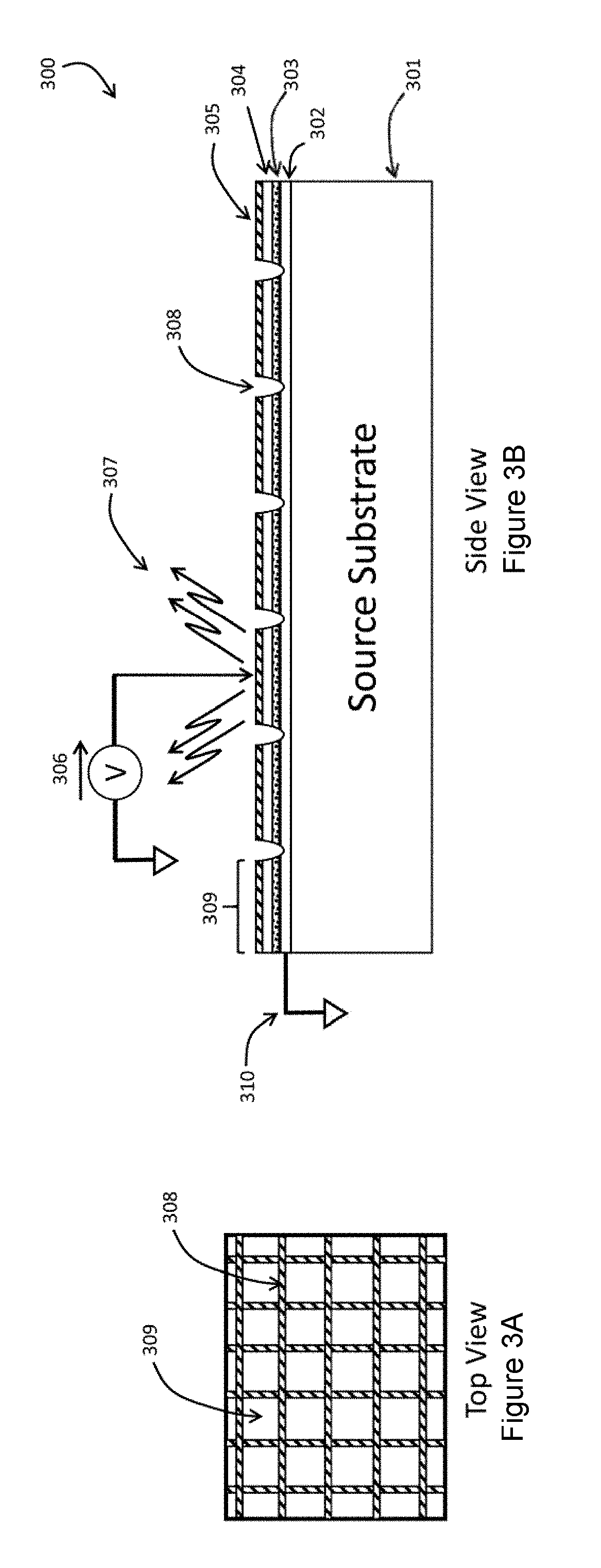Light emitting diode (LED) mass-transfer apparatus and method of manufacture
a technology of light-emitting diodes and mass-transfer equipment, which is applied in electrical equipment, semiconductor devices, and testing/measurement of semiconductor/solid-state devices, etc., can solve the problems of inability to print kgd devices, inability to meet the requirements of micro-transfer-print systems (over 1500), and current approaches suffer from limitations in each of these criteria. , to achieve the effect of mass-production scale manufacturing, rapid and accurate placement of led device structures, and low cos
- Summary
- Abstract
- Description
- Claims
- Application Information
AI Technical Summary
Benefits of technology
Problems solved by technology
Method used
Image
Examples
example 1
esolution (3840H×2160V 16:9) BAR Mass-Transfer Performance Estimate
[0101]The following is the expected optimum throughput expected for the above laser conditions using a source substrate with 105 mm×105 mm LED device array of 15 μm pitch. The throughput will be somewhat less since it will not account for source substrate exchange time and site to site move time:[0102]a. Sub-pixel pitch: 125 μm (H)×375 μm (V)[0103]b. Number of sites: 11,650 cm2 display / 110.25 cm2=106 sites / display[0104]c. Pixels per scan line (H): 105 mm / 125 μm=840 pixels per scan[0105]d. Number of scan lines per site: 105 mm / 375 μm=280 lines[0106]e. Site throughput: 280 scan lines×19 msec=5.32 seconds / site[0107]f. Total pixels per site: 280 scans / site×840 pixels per scan=235,200 pixels / site[0108]g. Total time per display: 5.32 seconds / site×106 sites / display=564 seconds / display[0109]h. Pixel throughput=160M pixels / hour
[0110]The tremendous throughput improvement potential of this method can be appreciated by comparing...
example 2
Cellphone Display (1920H×1080V 16:9) BAR Mass-Transfer Performance Estimate
[0111]The following is the expected optimum throughput expected for the above laser conditions using a source substrate with 105 mm×105 mm LED device array of 15 μm pitch. The throughput will be somewhat less since it will not account for source substrate exchange time and site to site move time:[0112]a. Scan time: 68.5 mm / 7500 mm / sec=9.13 msec (scan in display vertical direction)[0113]b. Sub-pixel pitch: 21.1 μm (H)×63.4 μm (V)[0114]c. Number of sites: 1.16 sites / display[0115]d. Pixels per scan line (V): 68.5 mm / 63.4 μm=1080 pixels per scan[0116]e. Number of scan lines per site: 105 mm / 21.1 μm=4975 lines[0117]f. Site throughput: 4975 scan lines×13.13 msec=65.3 seconds / site[0118]g. Total pixels per site: 4975 scans / site×1080 pixels per scan=5.37M pixels / site[0119]h. Total time per display: 65.3 seconds / site×1.16 sites / display=75.7 seconds / display[0120]i. Pixel throughput=296M pixels / hour
[0121]The above exampl...
PUM
 Login to View More
Login to View More Abstract
Description
Claims
Application Information
 Login to View More
Login to View More - R&D
- Intellectual Property
- Life Sciences
- Materials
- Tech Scout
- Unparalleled Data Quality
- Higher Quality Content
- 60% Fewer Hallucinations
Browse by: Latest US Patents, China's latest patents, Technical Efficacy Thesaurus, Application Domain, Technology Topic, Popular Technical Reports.
© 2025 PatSnap. All rights reserved.Legal|Privacy policy|Modern Slavery Act Transparency Statement|Sitemap|About US| Contact US: help@patsnap.com



